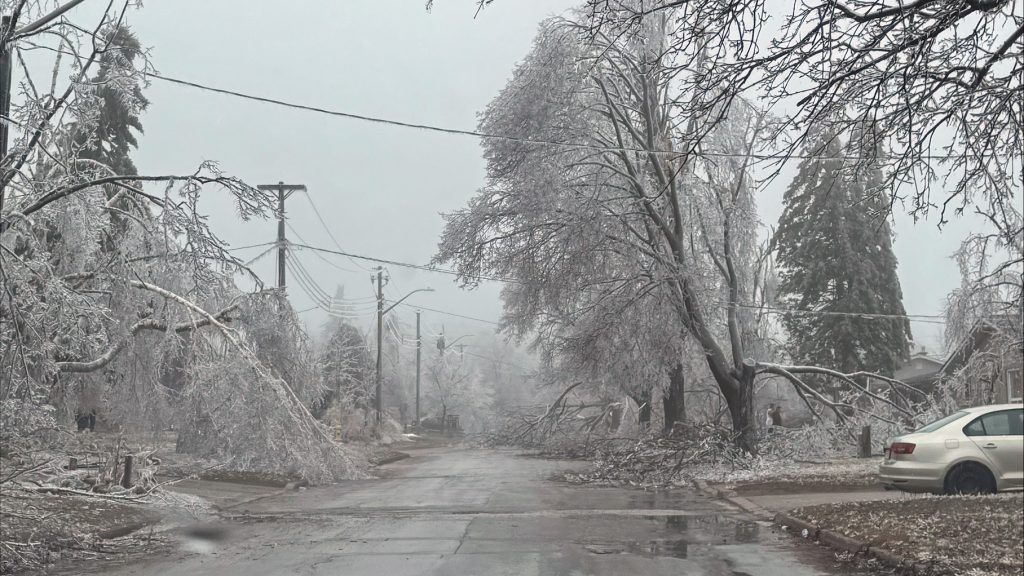How worldwide supply chain issues are impacting the Greater Toronto Area

Posted November 4, 2021 5:56 pm.
Last Updated November 4, 2021 11:03 pm.
With the holidays approaching and an anticipated surge in shopping activity set against a worldwide supply chain strain fueled by the COVID-19 pandemic, business owners and organizations have a message for consumers: be patient and be prepared to adjust expectations.
“This is not a short-term problem. This is going to be a long road to get out of the supply chain problems we’re in,” Robin Lee, the CEO of Lee Valley Tools, told CityNews on Thursday.
He said staff at Lee Valley Tools, which has stores across Canada including three in the GTA, have been working as best as possible to keep various items on the shelves.
As businesses navigated operating during the pandemic, experts have said a complex list of issues accumulated to create strains to the global supply chain. Among the difficulties raised include labour and material shortages along with backups in transportation and offloading at ports.
Using router bits as an example, Lee said pre-pandemic it would take about four months for an order to arrive in Canada from Taiwan. However, if the same order was placed today, he said it would take until spring 2023 for it to get to the company.
RELATED: How the global supply chain broke down and what it means for Canada
“Businesses are facing increasing risk buying so far into the future, and for many businesses, they just won’t do it which means they are going to run out of inventory,” Lee said.
“Even if you are willing to commit that far into the future, nobody is perfect, and we’re going to make mistakes and get the forecast wrong and then we’ll be out of stock as well. We’re going to feel the effects of this supply chain disruption well past Christmas and certainly probably for another 12 to 18 months.”
Like other operations, Lee’s company has been dealing with labour shortages and issues with suppliers (for example the company is looking to secure magnesium for castings from an alternative supply source due to an equipment failure).
“All of these small things add up,” he said.
Lee said he’s worried about trying to absorb increases in freight, materials and labour, adding the customer ultimately could be paying more. He also said he’s concerned about potential tax increases from the upper levels of government to pay for pandemic-related deficits stemming from initiatives like CERB.
Michelle Wasylyshen, the national spokesperson for the Retail Council of Canada, reiterated the industry is still dealing with the effects of the pandemic. When it comes to shopping and product choice, she said certain categories of items will have less choice — especially in November and December.
“When you go into a store you will see products on the shelves, but customers will need to choose a different brand or model if exactly what they’re looking for is unavailable,” she said.
Wasylyshen said furniture, appliances, winter tires, seasonal accessories, electronics, toys and bicycle parts are among the items subject to delivery delays or product shortages.
“It’s definitely concerning, but retailers have been planning for this since the beginning of the pandemic,” she told CityNews.
Looking at the supply chain broadly, Wasylyshen said bottlenecks at all shipping and delivery points, backlogs affecting shipping vessels, worker shortages, “unusual” consumer demand patterns in terms of changing demands for items, and COVID-19-related outbreaks and temporary closures have been factors.
“It’s a perfect storm of issues retailers are grappling with,” she said.
When could the supply chain issues ease and what can be done to help?
Dr. David A. Johnston, a research professor and director of the George Weston Ltd. Centre for Sustainable Supply Chains and the director of the Master of Supply Chain Management program at York University’s Schulich School of Business, has been monitoring the situation and described it as an “imbalance.”
He said things should “smooth out” going into 2022, but certain items such as microchips — something that has affected sectors like the auto industry — could take longer.
“There’s not just one thing where there’s a logjam or something stuck in a pipe. There’s a number of things that are interacting with each other,” Johnston said.
Looking forward, he said there needs to be a consideration to investing in additional warehousing to increase the number of items kept in the country or ramp up domestic production capacity for certain products. Johnston also said governments should look at boosting the workforce and encouraging people to get into work transporting goods.
Specifically in the GTA, the Toronto Region Board of Trade has been tracking how the pandemic has affected businesses.
RELATED: Champagne in U.S. to talk unblocking supply chain, and push rare-earth minerals
Marcy Burchfield, the vice president of the Economic Blueprint Institute at the Board, said the organization would like to see improvements when it comes to the supply chain.
“These small retail businesses in particular where they’re heading into a season where they hope to get gains they’ve lost throughout the pandemic it’s going to be a real challenge for them if these supply chain issues aren’t worked out,” she said.
“Tracking, understanding who has been impacted by these supply chain issues more broadly is something the government needs to do, but it’s very tough for the government to tackle the supply chain challenges themselves … there’s not a very good digital footprint of how goods move globally in the supply chain.”
Meanwhile, back at Lee Valley Tools, Lee had a message for general shoppers as businesses continue to respond to the pandemic.
“At the very beginning of this pandemic you heard very frequently, ‘We’re all in this together.’ Well we’re all still in it together. Have patience with businesses and have an appreciation for how well things were working before the disruption happened,” he said.
“It will get fixed and things will return to normal, but it’s not going to happen overnight. Be patient with the people who are helping you in the stores or over the internet. Everyone has got issues.”








